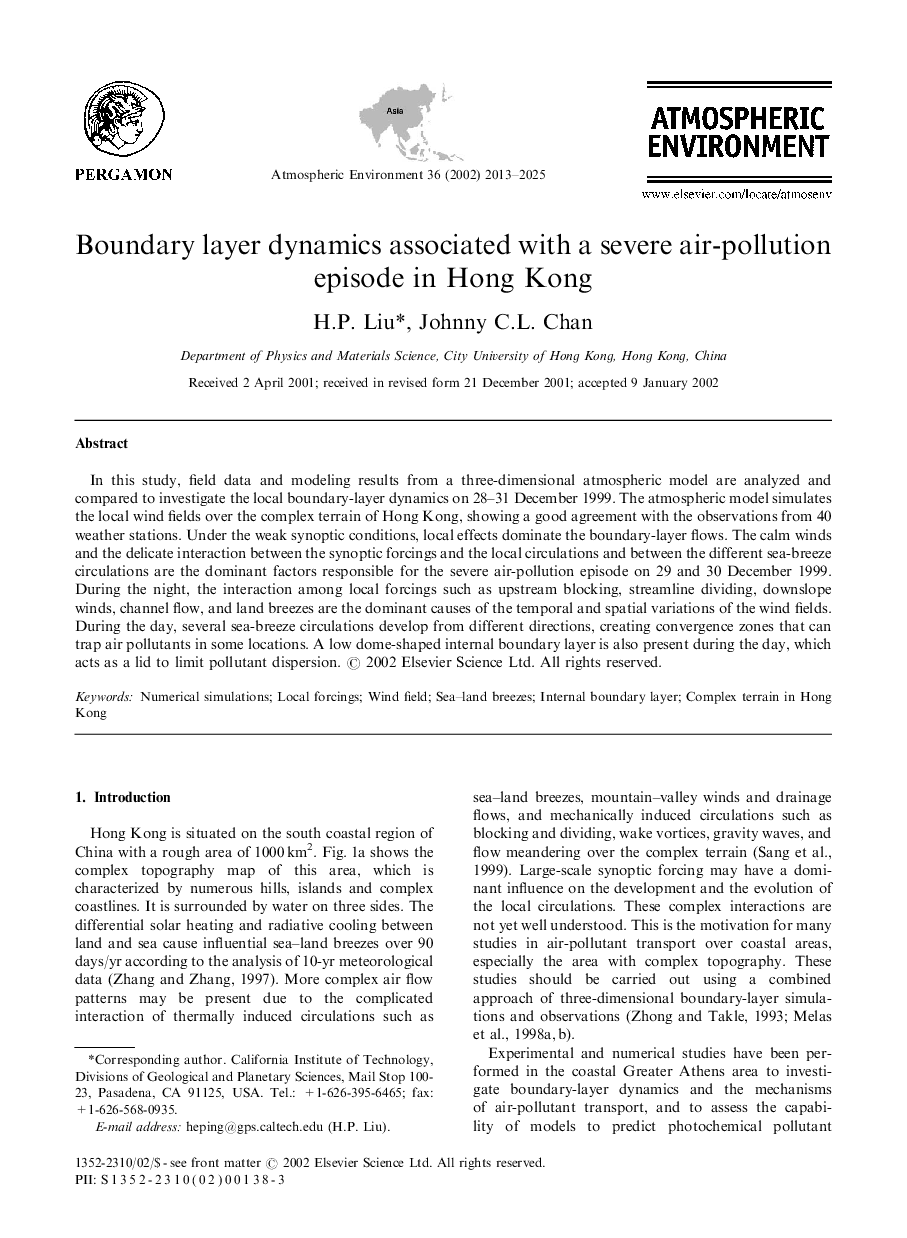| Article ID | Journal | Published Year | Pages | File Type |
|---|---|---|---|---|
| 4447274 | Atmospheric Environment | 2013 | 13 Pages |
In this study, field data and modeling results from a three-dimensional atmospheric model are analyzed and compared to investigate the local boundary-layer dynamics on 28–31 December 1999. The atmospheric model simulates the local wind fields over the complex terrain of Hong Kong, showing a good agreement with the observations from 40 weather stations. Under the weak synoptic conditions, local effects dominate the boundary-layer flows. The calm winds and the delicate interaction between the synoptic forcings and the local circulations and between the different sea-breeze circulations are the dominant factors responsible for the severe air-pollution episode on 29 and 30 December 1999. During the night, the interaction among local forcings such as upstream blocking, streamline dividing, downslope winds, channel flow, and land breezes are the dominant causes of the temporal and spatial variations of the wind fields. During the day, several sea-breeze circulations develop from different directions, creating convergence zones that can trap air pollutants in some locations. A low dome-shaped internal boundary layer is also present during the day, which acts as a lid to limit pollutant dispersion.
